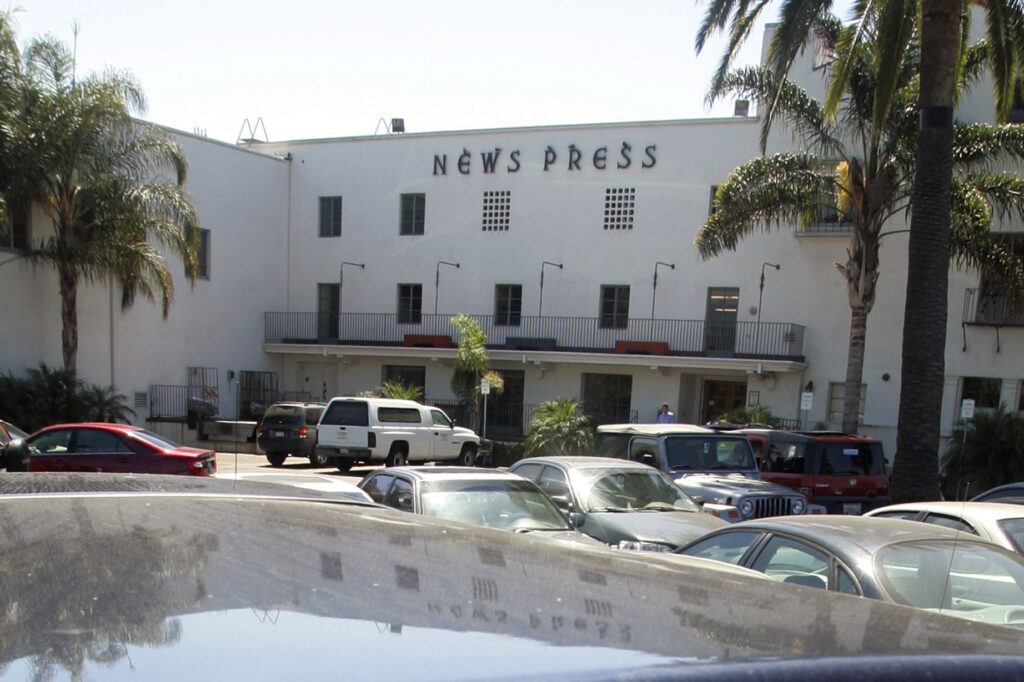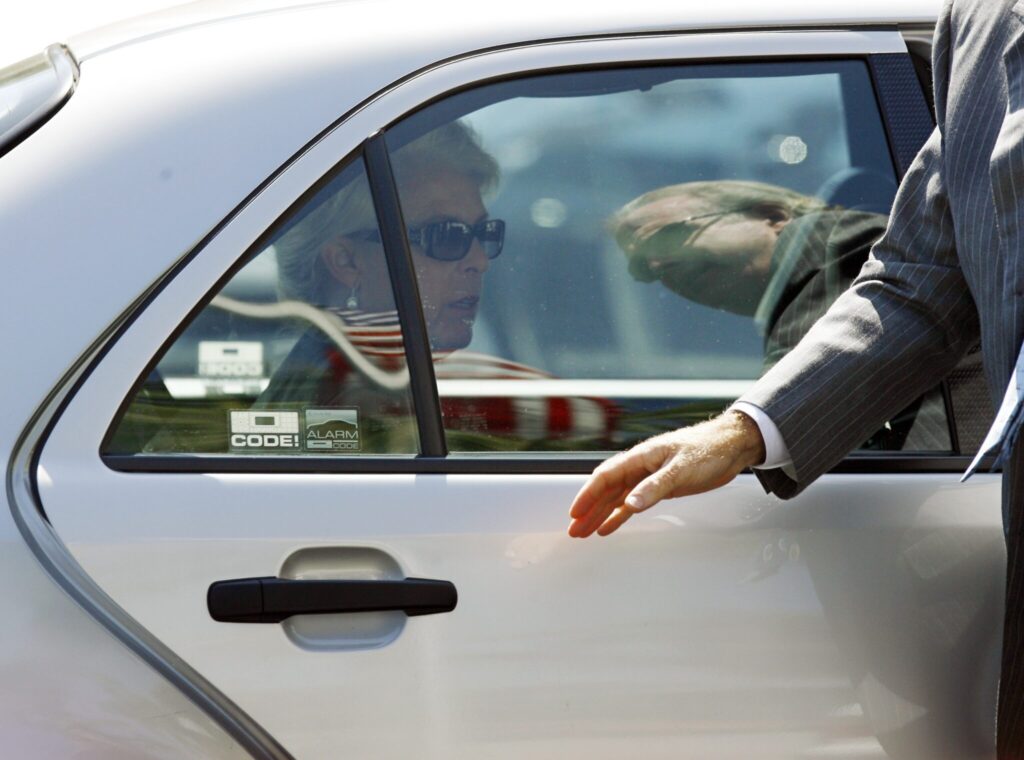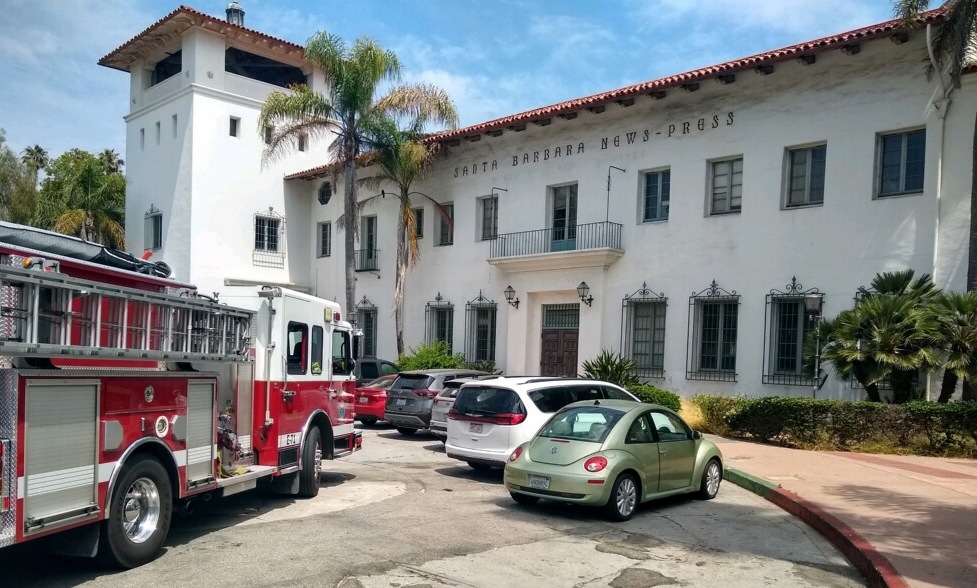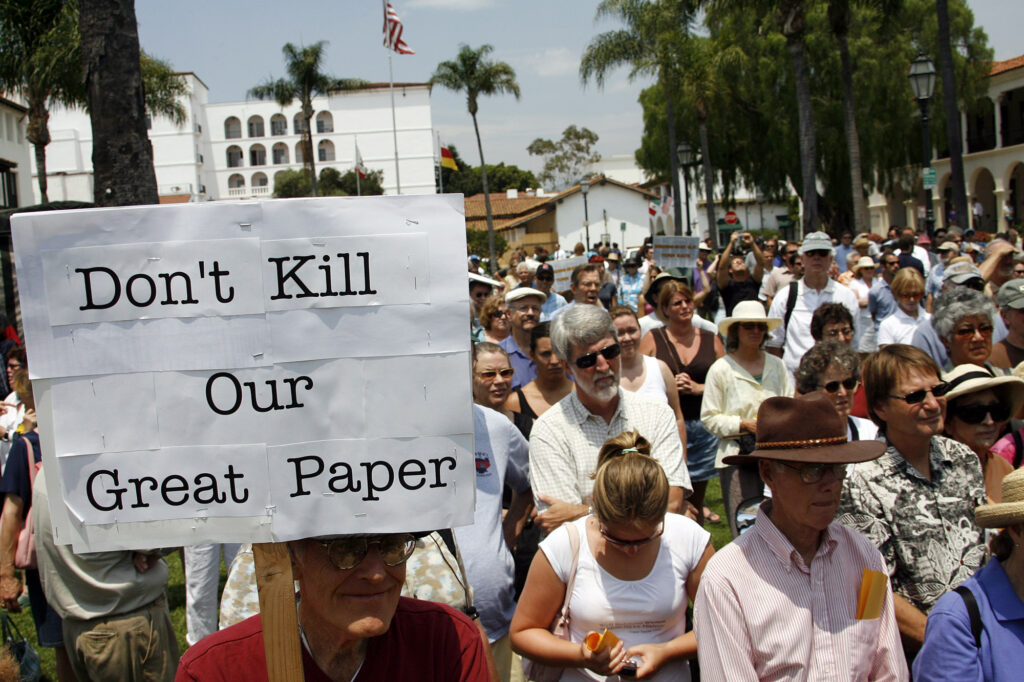More than 150 years of history ended on Friday when the Santa Barbara News-Press declared bankruptcy in a Chapter 7 filing by Ampersand Publishing, LLC. The online edition that day was the last news Santa Barbara will receive from the newspaper, founded as the weekly Santa Barbara Post in 1868, once the recipient of a Pulitzer Prize in 1962 for its editorials outing the John Birch Society, and owned by the New York Times before being bought by onetime billionaire Wendy McCaw in 2000 for a reported $110 million. The Chapter 7 filing is for liquidation, not reorganization. Though a creditors’ meeting is set for September 7, 2023, the bankruptcy filing states, “No property appears to be available to pay creditors. Therefore, please do not file a proof of claim now.” The Associated Press has the story:
Santa Barbara News Press stops publishing, files bankruptcy
Newslooks- SAN FRANCISCO (AP)
The Pulitzer Prize-winning Santa Barbara News-Press, one of California’s oldest newspapers, has ceased publishing after its owner declared the 150-year-old publication bankrupt.
The newspaper became an online-only publication in April. But its last digital edition was posted Friday when owner Wendy McCaw filed for bankruptcy.
Managing editor Dave Mason broke the news to staff in an email Friday, according to NoozHawk, a digital publication whose executive editor, Tom Bolton, used to lead the News-Press.
“They ran out of money to pay us. They will issue final paychecks when the bankruptcy is approved in court,” Mason wrote to staff.

On Monday, the News-Press’ website was still online, with the most recent stories published Friday. There was no mention that it would cease publishing or that it has declared bankruptcy.
A voicemail message left Monday by The Associated Press in the newsroom’s phone number was not immediately returned.
The Chapter 7 bankruptcy filing by Ampersand Publishing, the parent company of the Santa Barbara News-Press, said it has assets of less than $50,000 and debts and estimated liabilities of between $1 million and $10 million, according to federal court records. A meeting of creditors, which number between 200 and 999, is scheduled for Sept. 7.
Anthony Friedman, the lawyer listed for Ampersand Publishing in the bankruptcy filing, did not immediately return a phone call or email seeking comment. McCaw could not be reached.

At its height, the newspaper founded in 1855, had a daily circulation of 45,000 and was published seven days a week, serving Santa Barbara, an upscale city of 90,000 people. Editorial writer Thomas M. Storke won a Pulitzer Prize in 1962 for a series of editorials about the John Birch Society.
McCaw, then a billionaire local philanthropist active on environmental and animal rights issues, bought the daily from The New York Times Co. in October 2000 and a few months later appointed herself and her fiancé, Arthur von Weisenberger, as acting co-publishers.
Six years later, Santa Barbara News-Press Editor Jerry Roberts quit the newspaper along with four other top editors and a columnist to protest moves by McCaw that they said undermined the paper’s credibility. The editors who quit cited the publishers’ meddling in stories, which they said compromised the paper’s ethics. In one example, the editors alleged McCaw was against publishing a story about one editor’s drunken driving arrest and later intervened to stop a second story.
The editors who quit were also upset that McCaw had appointed the paper’s editorial page editor as the acting publisher.

“On one hand you have someone writing editorials and on the other hand editing news stories. There is an inherent conflict,” Don Murphy, who quit as the paper’s managing editor, told the AP at the time.
The paper’s closure “is not a big surprise,” Roberts said Monday. “The paper’s been on a downhill slide for a while.”
“But the fact that the community has lost its only paper is unspeakably sad,” he added.
Santa Barbara, which sits along the coast about 100 miles northwest of Los Angeles, is known for its stunning geography and wineries, attracting tourists and celebrities alike for its mild climate and beautiful views. The nearby town of Montecito was the site of deadly 2018 mudslides that killed 23 people.
About half of registered voters in Santa Barbara County are Democrats while roughly a quarter are Republicans, statistics that mirror the rest of the state. Under McCaw’s leadership, the paper in 2016 was among the few to endorse Republican Donald Trump for president. Democratic candidate Hillary Clinton won nearly twice as many votes in the county. McCaw personally wrote an editorial endorsing Trump again in 2020.
The community still has a weekly newspaper, The Independent, as well as the digital site Noozhawk. The closest major daily newspapers, though, are now in San Luis Obispo to the north and Los Angeles to the south.
The Press-News’ closure is the latest example of a struggling news media, said Tim Franklin, an expert in local news at Northwestern University’s Medill School of Journalism.
“We are losing on average two newspapers a week in the U.S.,” Franklin said. “We’re on pace to have lost about a third of all newspapers by 2025.”
Media companies are having to compete with Google, Facebook and Amazon, which are soaking up much of the ad market, and have yet to figure out a profitable business model for local news, he said.
“The local news crisis is happening in every corner of the country, including in affluent cities and suburbs,” he added.
The Los Angeles Times recently announced layoffs and earlier this month sold The San Diego Union-Tribune to MediaNews Group, which owns hundreds of papers around the country.
The Union-Tribune, which covers the second-largest city in California, is now owned by the same chain that owns a slew of Southern California newspapers. The parent company is Alden Global Capital, which has bought up newspapers across the country and faced criticism for slashing budgets and cutting jobs.
In January, the Mail Tribune, one of Oregon’s oldest operating newspapers, shut down, saying declines in advertising spending and difficulty hiring staff precipitated the closure.
The paper-based in Medford, Oregon, stopped producing a print edition in September but continued operating in a digital format until closing.







